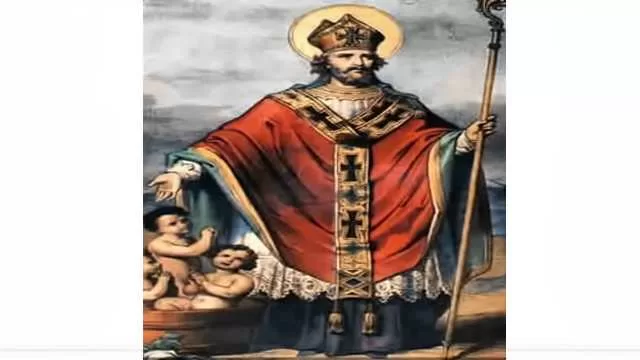In old England and Europe, before the Reformation, there was a unique tradition in churches. This tradition was similar to the Lord of Misrule but had a different spirit. On December 6th, the feast day of St. Nicholas, the patron saint of children and scholars, something special happened.
The Boy Bishop Tradition
On this day, cathedral choristers would choose one of their own to become the Episcopus Puerorum, or the Boy Bishop. This title also had other names, like Bearn or Bairn Bishop. The word “bairn” means child and is still used in Scotland and northern England today.
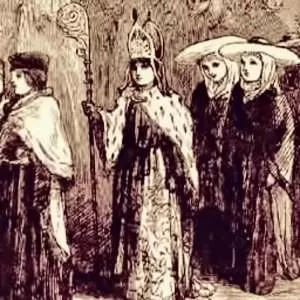
The real bishop would step down from his chair, known as the cathedra (the root of the word “cathedral”). The Boy Bishop would then take his place, dressed in beautiful, child-sized vestments. He wore a mitre, rings, and carried a crozier, just like a real bishop. The Boy Bishop received the same respect and authority as his adult counterpart. He was supported by a group of young helpers, known as prebendaries.
Duties and Celebrations
The Boy Bishop’s duties varied. In some places, he would visit the city and collect offerings. In others, the celebrations turned into playful mockeries. However, in many areas, the Boy Bishop performed his role with dignity and respect.
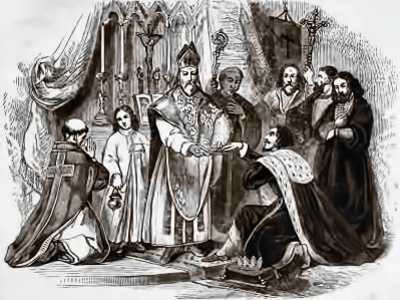
The earliest records of the Boy Bishop date back to the Constantinopolitan synod of 867. The first mention in England was in 1279 when Archbishop Peckham of Canterbury limited how long the Boy Bishop could serve. In 1299, King Edward I allowed a Boy Bishop to sing vespers in a chapel near Newcastle-upon-Tyne, rewarding him with forty shillings.
A Special Ceremony
During the Magnificat of the vespers on the eve of Childermas (the Feast of the Holy Innocents on December 28th), a special moment occurred. At the words “Deposuit potentes” (meaning “He hath put down the mighty from their seat”), the real bishop would leave his chair. The Boy Bishop would then take over for a day, preaching a sermon. Two of these sermons have survived.
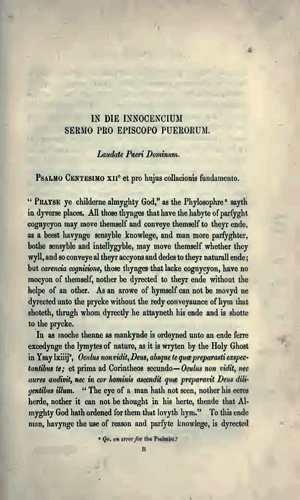
The first sermon, from around 1496, begins with, “Prayse ye childerne almyghty God, as the Phylosophre sayth in dyverse places.” The second, preached in 1558 at Gloucester, starts with, “Except yow will be convertyd, and made lykenu to lytill childern, yow shall not entre in to the kingdom of heaven.”
Spread of the Tradition
Initially, this practice began in cathedrals but soon spread to parish churches and grammar schools. Boys took over the roles of their elders for a day, continuing the tradition of the Boy Bishop.
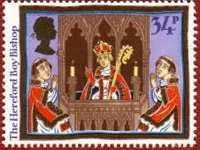
End of the Tradition
However, this tradition faced challenges. In 1541, King Henry VIII ended the Boy Bishops with an edict. He criticized the practice, calling it a “superstitious” and “childish” observance. He noted that children were dressed as priests and bishops, singing and dancing from house to house, gathering money, and even preaching in pulpits.
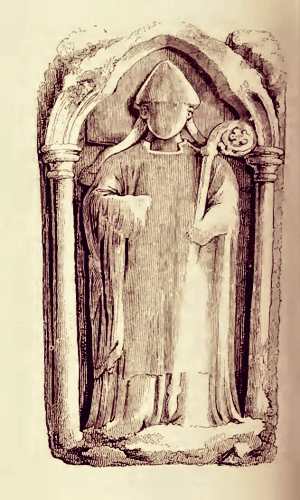
Later, Queen Mary Tudor tried to restore these old Catholic practices in 1552. She ordered the Feast of St. Nicholas to be celebrated in the traditional way in 1554. However, Queen Elizabeth I ultimately ended the custom when she became queen.
A Modern Revival
Despite its decline, the tradition of the Boy Bishop has seen a revival. Today, at Hereford Cathedral, a contemporary Boy Bishop gives a sermon and leads prayers during the St. Nicholas Day service. This revival shows that the spirit of the Boy Bishop lives on, reminding us of the joy and innocence of childhood.
In conclusion, the Boy Bishop tradition is a fascinating part of church history. It highlights the playful spirit of youth and the importance of community celebrations. While it may have faded over time, its legacy continues to inspire and entertain.

